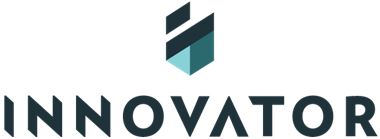Today's new ETF listings from around the world.
USA
Innovator ETFs lists annuity-like ETFs, offering defined outcomes
Innovator ETFs, an Illinois-based provider backed by PowerShares founder Bruce Bond, is listing a suite of defined outcome ETFs that lock in certain returns on the S&P 500. The new ETFs buy and sell options to protect investors from downside risk while capping the gains they can receive.
Innovator S&P 500 Buffer ETF — July (BJUL)
Innovator S&P 500 Ultra Buffer ETF — July (UJUL)
Innovator S&P 500 Power Buffer ETF — July (PJUL)
The difference between each of the three ETFs is the outcomes they lock in. The Buffer fund (BJUL) will protect investors from the first -10% of S&P 500 losses. Investors wear any losses beyond 10%. The prospectus leaves blank the area specifying what the upside cap will be, but does provide the following below image:
The Ultra Buffer (UJUL) will provide protection from -5% to -35%, meaning investors must wear the first -5% drop in the S&P 500 but are protected from there down to -35%. Again, we could find no mention of the upside cap. The prospectus for Power Buffer (PJUL) provides no gleanings on where the caps and buffers lie.
Analysis - beware of missing the lockup period
The three ETFs are certainly innovative, but investors should understand that delayed purhcase (i.e. a missed lockup period) can have serious consequences. If an investor buys into the fund too late - i.e. after the lockup period has already begun - and the fund has risen in value nearing the cap, they may receive zero upside. Similarly, if an investor buys in after these ETFs have fallen in value beyond the buffer, they will receive zero downside protection.
The prospectus warns: "You should not consider this investment if... you have not visited the Fund's website and do not understand the investment outcomes available to you based upon the timing of your purchase." Investors take note.
Aptus lists actively managed leveraged momentum multi-asset ETF of ETFs
Alabama-based Aptus Capital Advisors is listing a new actively managed ETF of ETFs that seeks leveraged exposure to momentum stocks, while buying laddered corporate bonds to reduce risk. The Aptus Defined Risk ETF (DRSK) will use two strategies: one for fixed income that provides risk management; another for equities that provides leveraged momentum exposure.
On the fixed income side, DRSK will invest between 90 and 95% of its assets in investment-grade corporate bond ETFs. fixed income strategy takes a laddered approach, and picks US dollar-denominated corporates with maturities roughly evenly spaced across each of the next seven to eight years. ETFs will be purchased that "track the investment results of an index composed of… bonds maturing in a specified year during that period (e.g., bonds maturing in 2023)," the prospectus says.
The remaining 5 to 10% of the fund's assets will be committed to the equity strategy. This will involve getting exposure to US large caps using exchange-listed call options on 10 to 20 stocks "selected based primarily on their momentum… and potential for growth and subject to a minimum liquidity threshold for investibility," the prospectus says.
Oppenheimer lists dividends funds
New York-based Oppenheimer Funds is listing two new dividend-focused ETFs that look beyond America's low dividend paying shores for returns.
Oppenheimer Emerging Markets Ultra Dividend Revenue ETF (REDV)
Oppenheimer International Ultra Dividend Revenue ETF (RIDV)
excludes the top 5% of securities within each country by yield;
excludes the top 5% of securities within each sector by dividend payout ratio;
selects the top 200 securities according to the highest average of the 1-year trailing dividend yields over the past two years and
re-weights those securities according to the revenue earned by those companies, subject to the same cap of 5% per company.
over its options holdings every quarter. Each time it rebalances its equity strategy, the fund will sell the options it holds and purchase new ones as described above.
REDV tracks the FTSE Custom Emerging Ultra Dividend Revenue Index. The index takes the top 100 companies from its parent index, the FTSE Emerging Index, based on which have the highest average 1-year trailing dividend yields over the past two years. It then re-weights them based on revenue, with the weight of each company capped at 5%. RIDV tracks an index with a long name: the FTSE Custom Developed ex US Ultra Dividend Revenue Index. The index starts with the FTSE Developed ex US Index as its parent. It then: The index is rebalanced quarterly and has 200 securities.
Canada
Horizons lists model portfolio ETFs
Mirae-owned Horizons ETFs is listing two new ETF-of-ETFs that offer ready-made portfolios.
Horizons Conservative TRI ETF Portfolio (HCON)
Horizons Balanced TRI ETF Portfolio (HBAL)
According to reports in the Canadian press, the listings are intended to bring Horizons into closer combat with Vanguard, which already provides similar multi-asset ETFs. The listings themselves charge no management fee in order to make them preferable to robo-advisors, the same report says. Robo-advisors charge fees, although provide an array of other back-end services including help with taxation.
The funds will invest in seven of Horizons' total return index ETFs. There are no management fees for the two new listings. But the seven ETFs that make up the funds will maintain their management fees, meaning fees are still in play. HCON will split its investment 50/50 between equities and bonds. HBAL will go 70/30 between equities and bonds.







